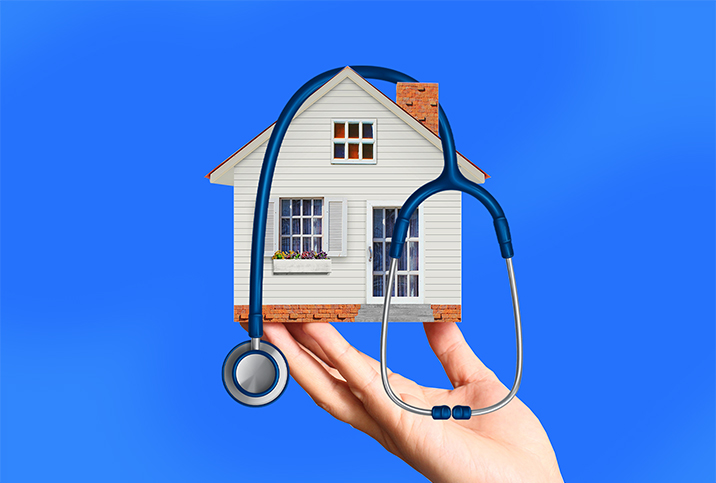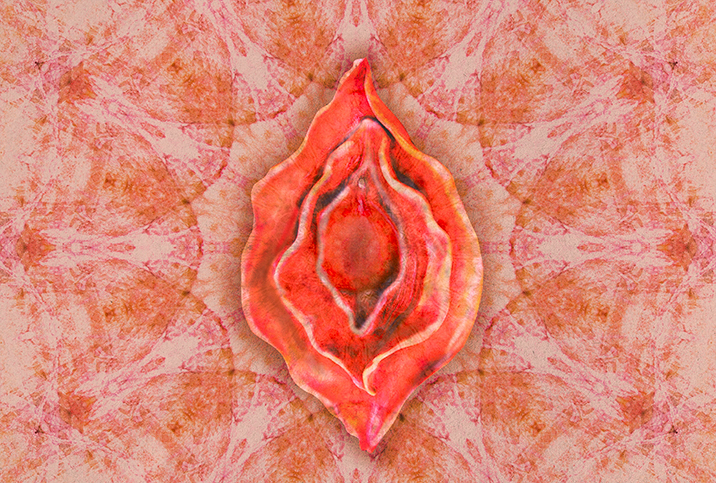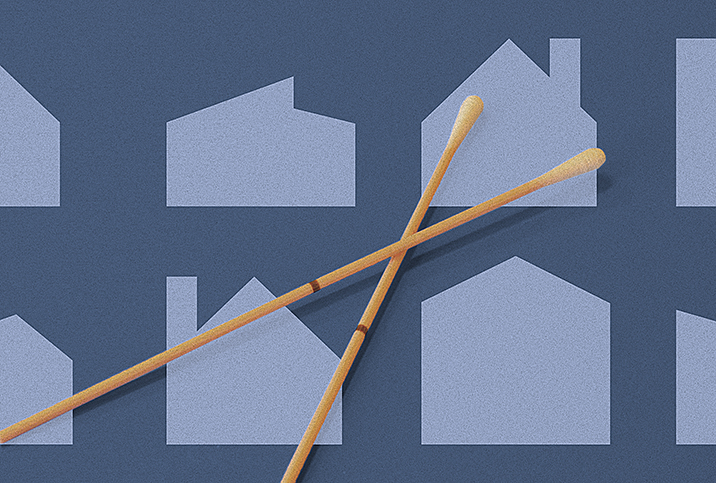House Calls for Human Health: Screening and Trauma Recovery

If you watched the 2022 Super Bowl, you may have seen ads for a device that processes a COVID-19 test via a nose swab. While the tech is complex, this could lead to exciting prospects for more effective at-home health screening options.
"It's basically a box, and you get these little kits and you swab your nose and you put the little kit in, and it's an electronic reading of a COVID test at home," said Christine Brennan, a registered nurse and an associate professor at Louisiana State University's School of Public Health who has extensive experience in HIV screening. "But this company is also working on other at-home electronic screening and testing, like, specifically, [for] STIs."
Though STI/STD testing by way of an at-home robot isn't a reality just yet, the COVID-19 screening tool does sort of open the door to a realistic path toward similar options for diseases such as HIV, herpes, the flu, chlamydia, syphilis and more.
The techno-medical dream of at-home health care
It's hard to argue against the idea of regular folks being able to help themselves to trustworthy and reliable testing at home for any disease, especially sexually transmitted diseases and infections.
Brennan said she's never met a single person who, once they found out they were HIV positive, for example, did not attempt to change their behavior or take care of it. She added that most healthcare workers and the patients who need these services most are excited by the possibility of at-home testing options via technology.
It may feel worrisome to think about machines replacing medical professionals, but Brennan noted that the people who should truly worry are the ones who police access to medical care.
"Is medicine too afraid that we can put the power back in the people and they won't need us anymore?" she asked, adding that machines already supplement more old-fashioned means of medical screening and labor hours traditionally performed by people.
"How do I test for HIV? I stick it in a machine," Brennan said.
Trauma treatments at home?
Karol Darsa, Psy. D., is a licensed psychologist who wrote a book on trauma mapping and owns a trauma treatment center in Los Angeles. Darsa has experience working with people in their own homes to recover from trauma.
"Trauma work sounds so scary for so many people," she explained. "The moment you mention it, they go, 'No, no, no, are you kidding me? All my life I try to get away from it, and you're going to tell me that now I have to deal with it and remember it?'"
Darsa pointed out notions about trauma therapy purging—whereby someone processes trauma by repeatedly talking about the incidents over and over again—are outdated.
"Now we know[as] somatic trauma therapists, we know that [purging is] not actually a requirement anymore," she added. "Rather than focusing on the story itself, we actually focus on how to help the person to really heal from the symptoms, how to regulate their emotions, feel more at peace and more accepting of what happened rather than [focusing on] the story. So I think educating people about that can probably motivate them more."
What better place is there to focus on finding peace, regulating emotions, healing from symptoms and accepting past traumas than in your own home? It's the place where you develop many of your routines and where you're likely to feel safest.
'Is medicine too afraid that we can put the power back in the people and they won't need us anymore?'
"My treatment center has the name of 'trauma' in it," Darsa said, referring to Reconnect Integrative Trauma Treatment Center. "So either people come in because they know they're going to do this or they go, 'Holy s--t, no, I'm never going there. You're going to make me open Pandora's box.'"
Some people aren't consciously or subconsciously ready to address their traumas, and though they should be allowed and encouraged to do so at a pace they are comfortable with, the physical requirements of visiting a healthcare provider can create barriers that may be more challenging for some than others.
Overcoming this challenge is, of course, a part of the process in many instances, but a home visit option might be able to create a more incremental process for anyone whose recovery is stunted by physical or severe psychological barriers having to do with social anxiety or visiting new places.
There is always the choice of a traditional in-office visits, but house calls can save time and repetition for providers, and especially for patients who learn and absorb information more easily from the comfort of their own home.
More options for more care
"The reason I'm hesitating about the home visit is because this is already such a difficult topic," Darsa noted. "Coming to someone's home could feel, for some people, too intimate, too invasive. For some people, it's better because they feel safer at home. For some people, it's that you're coming into their safe space as a stranger. When they come into my office, they can separate themselves from [their home]."
Logistically, institutionally normalizing house calls is impossible given the current infrastructure and environment of health care in the United States, but should more people have access to home visits as an option? Arguably, the answer is yes, with the caveat that it wouldn't be right for everyone.
It's funny how a modern machine might be revitalizing an aspect of medical practice, house calls, most commonly seen these days in old Western movies and reruns of 1950s and '60s TV shows. In a way, we're going back to the future.


















